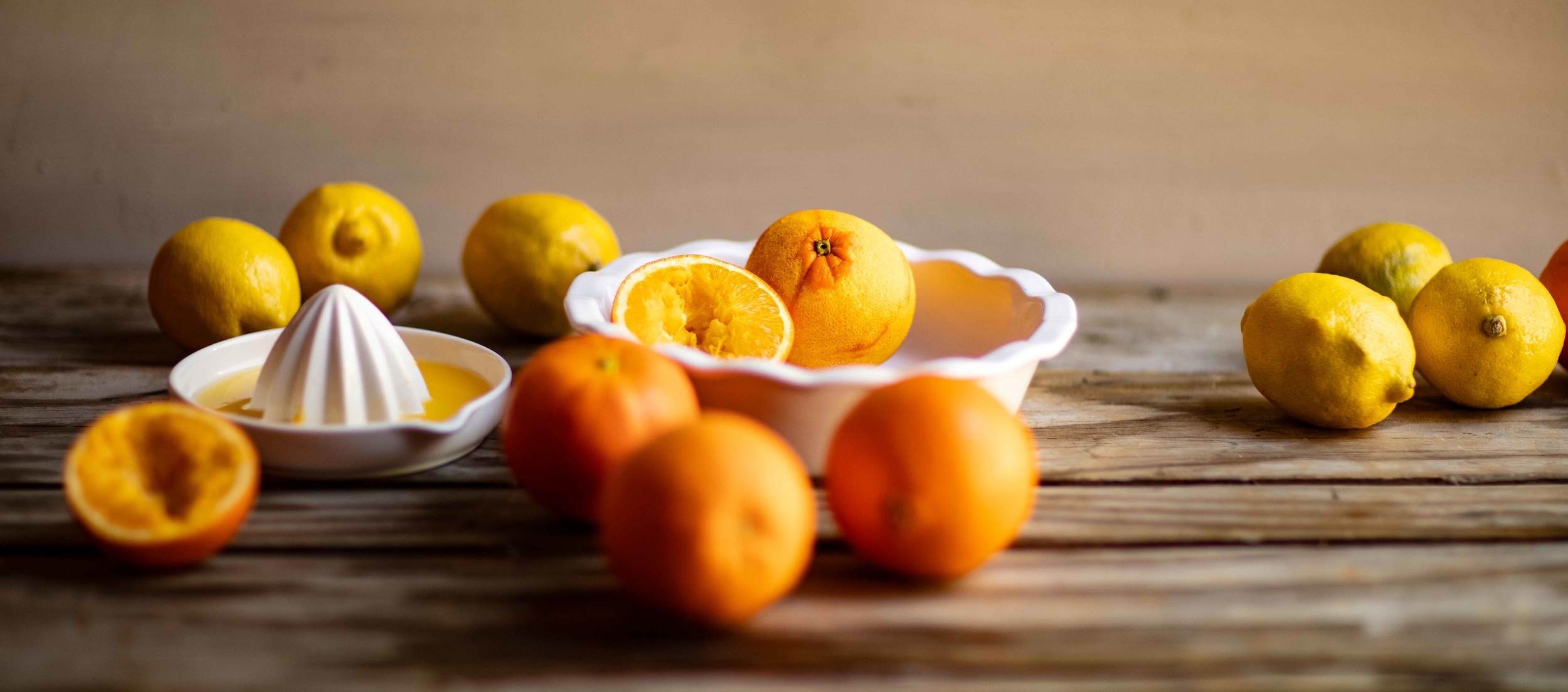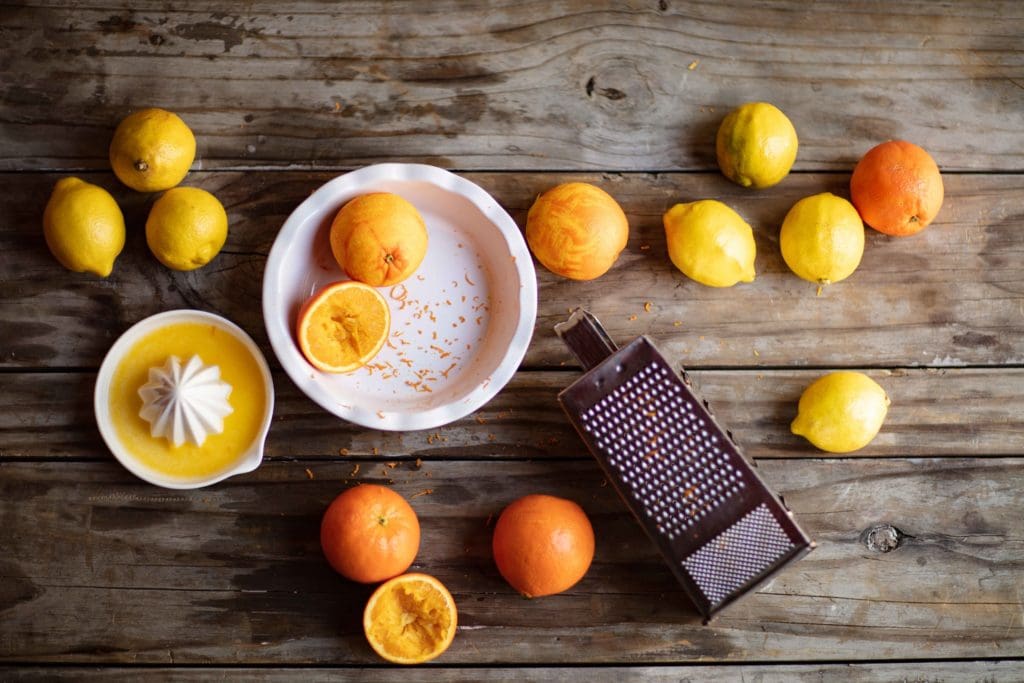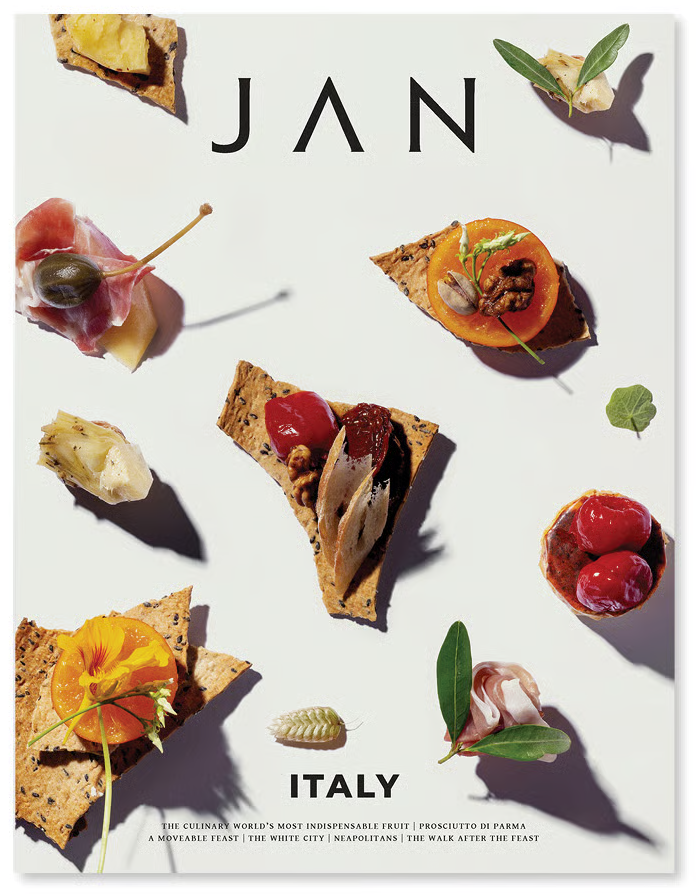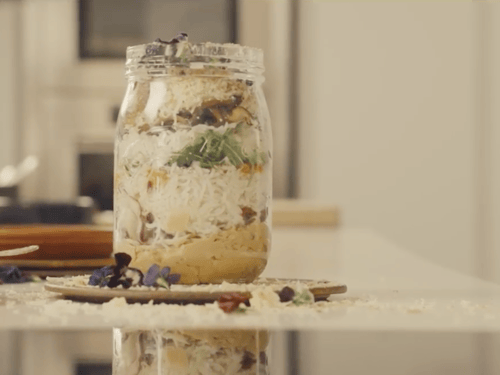It’s almost like nature knows, as winter breaks and our moods become more contemplative, there’s one thing that never ceases to brighten up my day. The first sight of citrus evokes so many memories and emotions, like baking Japie se Gunsteling with my Ouma, tearing the skin of a lemon or orange open, releasing a spray of citrus oils into the air, and breathing in its fresh and comforting fragrances. The inspiration I get from one such moment is enough to fill a whole seasonal menu. But not everyone knows just how valuable an ingredient citrus is, and I for one think it’s time to rediscover this gem.

How to get the most out of citrus- It’s not just about the juice
Apart from the seeds, which will always taste bitter no matter what, using the skin (or indeed the whole fruit) can take your cooking to a whole new level.
Roasting any kind of citrus (as you would a vegetable) makes it slightly sweeter, which is great for citruses like lemon or grapefruit that can sometimes be overpoweringly sour or bitter.
Similarly, adding wedges or slices of any kind of citrus to fish and chicken before popping it in the oven gives the dish an instant but oh so complementary flavour boost.
The zest, of course, is much better at giving a dish a lemony, orangey, limey, or grapefruity taste than the juice alone, which can often change its flavour depending on how it’s cooked.
Mix it up
Lemon has the uncanny ability to bring out the best in most other flavours, but don’t deny yourself the opportunity to get better acquainted with the rest of the family.
When making vinaigrettes, for instance, go for an abundance of flavours. More specifically, let sweet and sour battle it out in the same dish by mixing citrus or experimenting with various types of vinegars, like rice and wine vinegars.
Also, try adding a twist to your dish by combining two types of citrus. They might belong to the same family, but lime and lemon are on opposite ends of the flavour spectrum, for instance, so things can get really interesting.
Beware its wanton ways
Never let your fear of trying new things in the kitchen hold you back from bringing citrus into your culinary arsenal, but there are one or two ground rules worth making a mental note of:
While a splash of citrus can tart up a creamy sauce to great effect, too much of it can make the cream curdle, so keep a watchful eye on your quantities when working with dairy.
As soon as it leaves the pith, the zest starts to lose its flavour. Rule of thumb: zest with zeal and use immediately. Also, don’t be afraid to cut the zest off with a paring knife and to cut it into thin strips. It just finishes off a seafood dish beautifully – an effect not as easily achieved with grated zest.
When cooking with citrus juice, try to keep your excitement under control and add it towards the end rather from the get-go. The longer the juice cooks, the more it takes on a bitter, medicinal quality. When added at the end, it freshens up the dish.
INGREDIENTS
3 eggs, separated
250 g (300 ml) caster sugar
375 ml milk
55 g (100 ml) cake flour
310 ml orange juice
30 ml lemon juice
finely grated peel of 1 orange
40 g (45 ml) butter, melted

METHOD
Preheat the oven to 180 °C. Beat the egg yolks and sugar until light and fluffy.
Add half the milk to the egg mixture and beat for 2 minutes.
Add the flour and the rest of the milk, and beat thoroughly.
Add the orange juice, lemon juice, orange rind and melted butter and mix well.
Beat the egg whites until stiff before folding it into the mixture.
Butter a tea or coffee cup, spooning in the mixture and repeating until you have filled the desired amount of cups. Then, place the cups on an oven dish and fill it halfway with boiling water to keep the puddings moist.
Carefully place the puddings in the oven for 45 minutes. A crust will form over the top, sealing in the sauce below. Serve warm.
FEATURED RECIPES



























